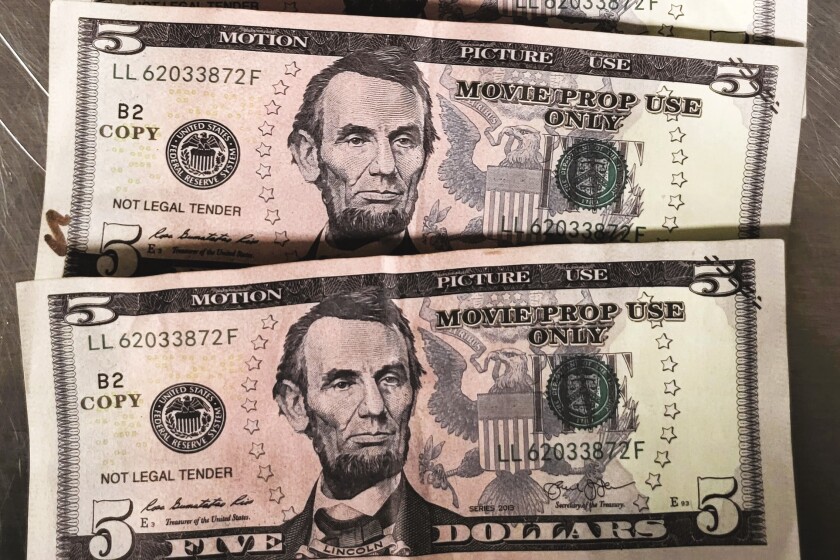Discover making uses of Fake Cash in Artistic Creations and Theatrical Performances
Phony money, often associated with deception and illegality, holds a strange appeal when it discovers its way into the world of artistic productions and staged efficiencies. As we delve into the complex usages of fake cash in these imaginative domains, we begin to discover a globe where authenticity and imitation blur, motivating us to examine the actual nature of worth and depiction within art and efficiency.

Historical Significance of Funny Money in Art
The historical value of copyright cash in art is a facility and interesting topic that clarifies the junction of imagination, subversion, and socio-political discourse. Throughout history, artists have made use of funny money as a device for difficult societal standards, examining the value of currency, and making effective statements concerning riches and power.
Among one of the most significant instances of fake cash in art go back to the Dada motion of the early 20th century - copyright money for sale. Artists such as Marcel Duchamp and Hannah Höch integrated copyright into their works to criticize the capitalist system and explore the concept of value in a rapidly transforming globe
Furthermore, throughout times of financial instability or political upheaval, funny money has been utilized by musicians as a form of protest or disobedience. By developing and flowing phony currency, musicians have actually been able to interrupt the status, obstacle authority, and provoke crucial conversations concerning the role of cash in society.
Effect of Imitation Currency on Visual Arts
By including copyright right into their jobs, artists provoke conversations on the nature of value, credibility, and societal understandings of wealth. The usage of fake cash in art likewise raises honest factors to consider regarding the borders of imaginative expression and the ramifications of replicating lawful tender. In general, the effect of phony money on aesthetic arts is complex, promoting important reflections on the junction of cash, art, and social values.
Meaning and Meaning in Theatrical Imitation Displays
Using theatrical fake screens, artists utilize symbolic depictions to communicate much deeper significances and stimulate thought-provoking interpretations within the world of efficiency art. Via the incorporation of funny money in staged productions, makers can explore themes such as greed, power, corruption, and the illusion of wealth. Making use of copyright on stage can offer as an allegory for societal issues, economic variations, and the delicacy of financial systems.
In theatrical performances, the symbolic value of funny money prolongs beyond its financial worth. It can signify the deceptive nature of appearances, the quest of materialistic wishes, and the repercussions of underhanded actions. By utilizing funny money as a prop, musicians can challenge target markets to question truth definition of wide range and the moral boundaries that people might go across in its pursuit.
Honest Considerations in Making Use Of copyright Cash for Art

One major moral consideration is the possible lawful effects of using phony money in art. Counterfeiting currency is illegal in a lot of countries and can bring about serious consequences for artists who purposefully incorporate fake bills into their job. copyright money for sale. This not just places the artist in danger however likewise increases inquiries about advertising illegal tasks through art
In addition, there is a moral predicament concerning the authenticity of the artwork itself. Utilizing funny money blurs the line between truth and replica, potentially tricking visitors and jeopardizing the stability of the imaginative piece. Artists must consider whether making use of copyright money straightens with their values and artistic purposes, evaluating the potential influence on their online reputation and credibility.
Future Trends in Funny Money Combination
Thinking about the evolving landscape of imaginative expression, the consolidation of copyright cash in imaginative works might witness a shift towards innovative and intriguing opportunities. As artists continue article source to press limits and discover brand-new tools, funny money could significantly be utilized to challenge social norms, examine the value of money, or make powerful declarations regarding wealth and consumerism.
One future fad in phony money assimilation could be its utilization in immersive art installments where audiences are urged to interact with the pieces, blurring the lines in between reality and impression. Furthermore, improvements in technology might result in the development of hyper-realistic funny money that is practically indistinguishable from genuine currency, opening up opportunities for a lot more elaborate and in-depth artworks.
In addition, collaborations between musicians and counterfeiters can lead to special pieces that combine conventional imaginative methods with the craftsmanship of producing funny money. Nonetheless, ethical factors to consider bordering the legality and morality of utilizing phony money in art will certainly continue to be a point of opinion as these future trends unfold.
Conclusion
To conclude, the uses of copyright cash in imaginative productions and theatrical performances have a long history and remain to give inspiration for recommended you read artists. From its historic value to its impact on aesthetic arts and meaning in theatrical displays, phony cash plays an one-of-a-kind function in the art globe. Ethical factors to consider must be taken right into account when utilizing phony cash for innovative objectives. The assimilation of funny money in art is most likely to proceed advancing in the future.
Overall, the effect of phony currency on visual arts is complex, straight from the source boosting essential reflections on the intersection of cash, art, and social worths.

In final thought, the uses of imitation cash in staged efficiencies and imaginative developments have a lengthy history and continue to be a source of inspiration for musicians. Ethical considerations should be taken right into account when using phony cash for imaginative purposes. The assimilation of imitation cash in art is most likely to continue developing in the future.